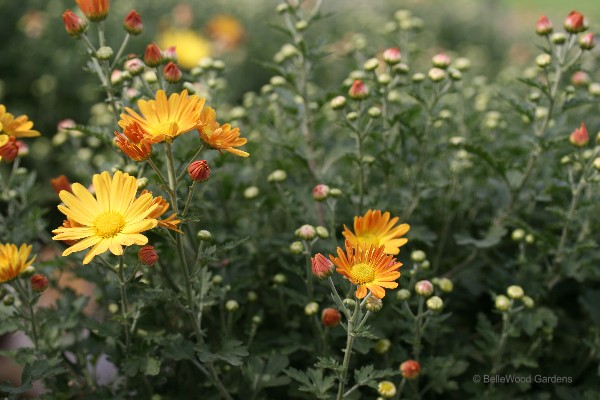
Nearly there. The tension is ratcheting up as the Kiku Festival at the The New York Botanical Garden prepares to open on October 20th, in just a few weeks. What's kiku? Chrysanthemums in Japanese high style. As grown in Western gardens, chrysanthemums are given a compact size by treating with a chemical that shortens the internodes.So what's the big deal? Kiku have been revered throughout Japan for more than 1500 years. Plants grown in the formal style are cultivated with meticulous attention, expertly shaped into traditional forms. Cultivating kiku is exceptionally difficult, requiring constant, expert attention throughout a 12-month growing period as plants are watered, pinched, staked, and tied in a variety of highly specialized shapes. Traditionally, there are three styles: cascade, thousand blossom, and single stem.

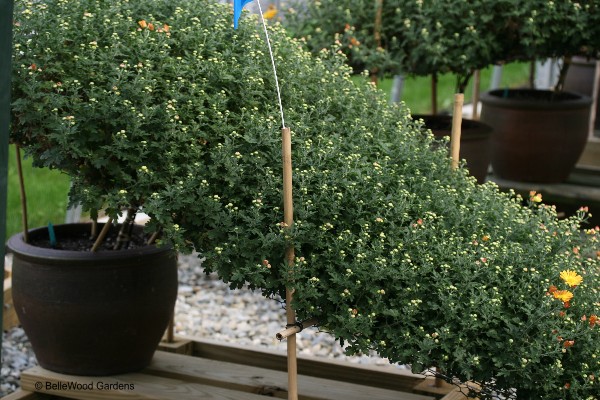
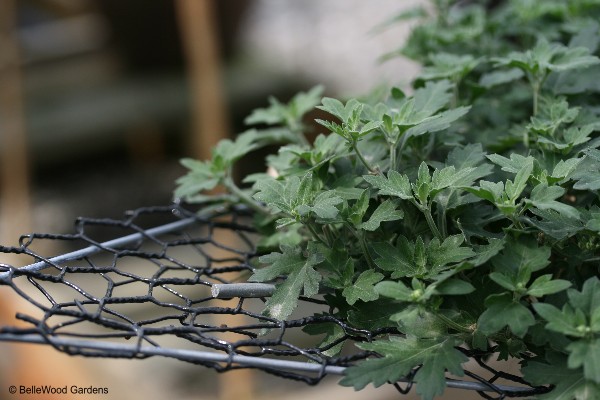
.
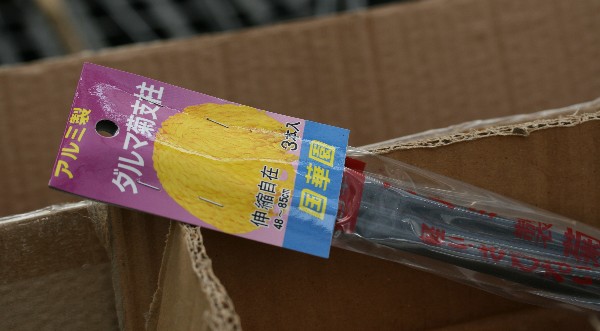
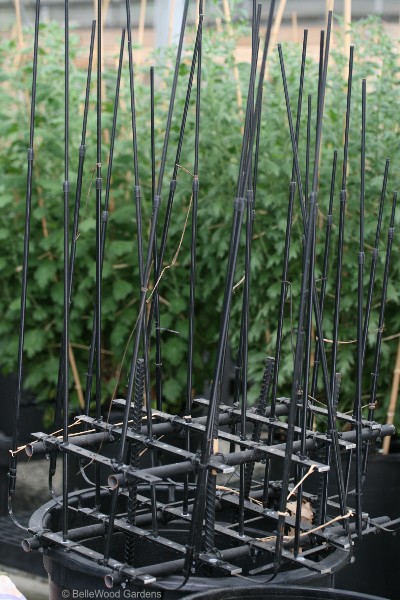
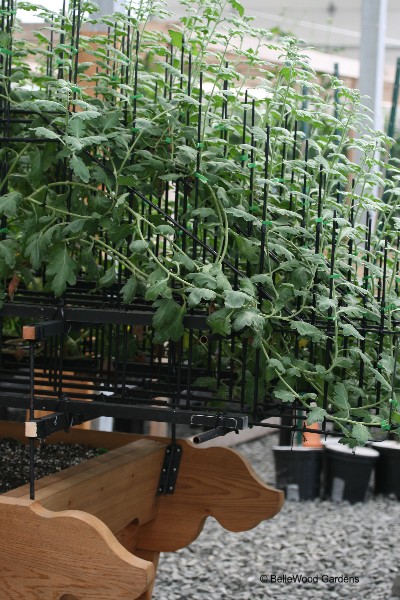
.
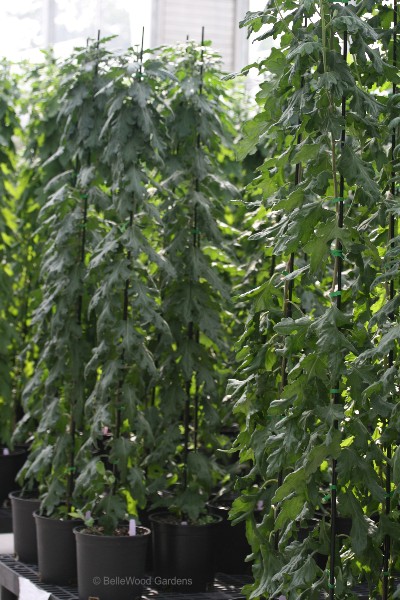
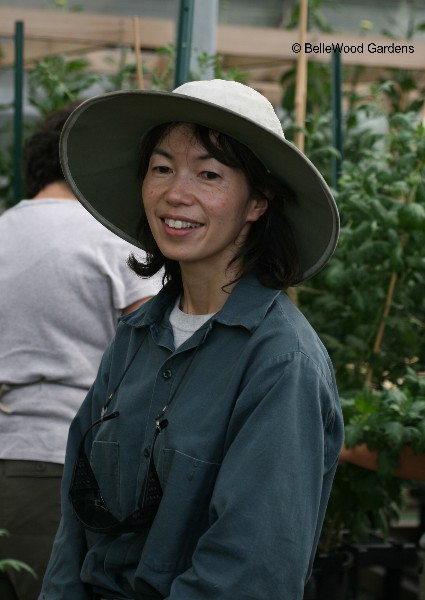
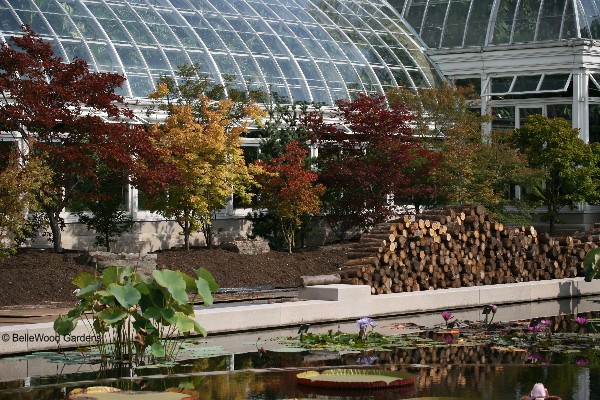
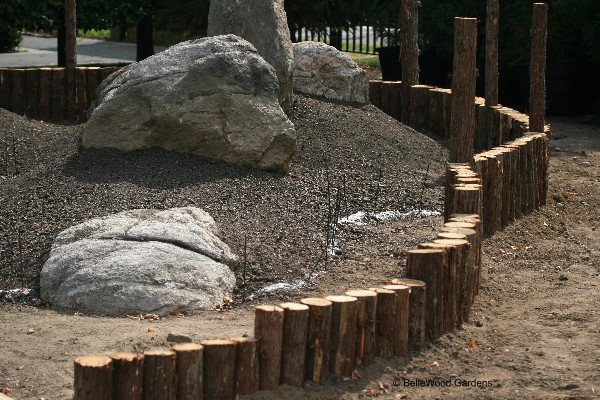

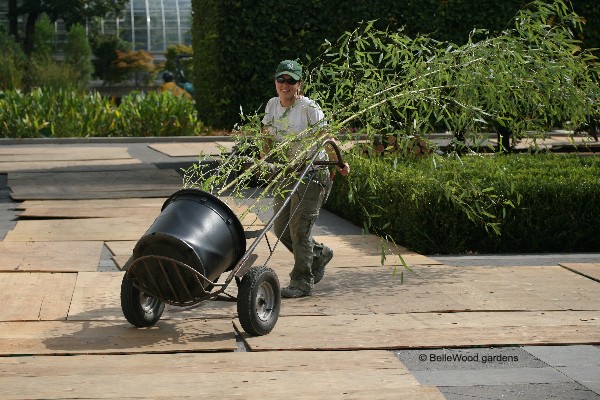
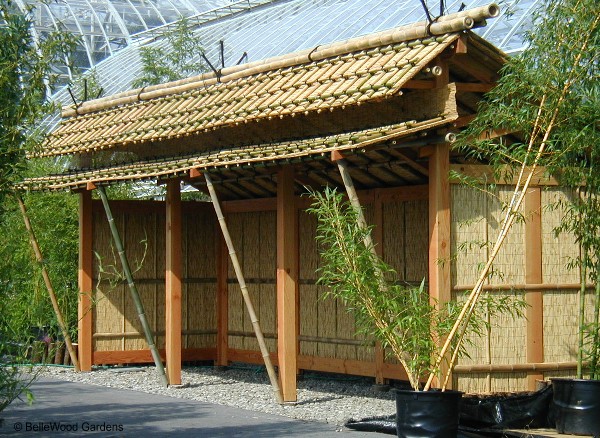
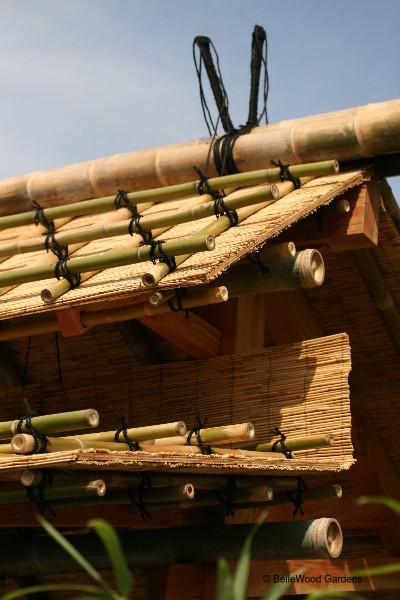
For everyone fortunate enough to visit, what a wonderful opportunity to enjoy the results of this multi-year international collaboration between Shinjuku Gyoen National Garden in Tokyo and The New York Botanical Garden, blending East and West through the flawless beauty and honored tradition of kiku.
I e-mailed Scott Canning to let him know I'd be visiting Wave Hill today. He would, unfortunately, be away. But, he assured me, I'd have a great visit. The asters and dahlias in the Flower Garden are magnificent magnificently in bloom. Did you, dear reader, happen to peruse my Daisy, Daisy entry earlier this month, where I nattered away about these efficiently clustered-together flowers? Strip Asteraceae from the countryside and we lose goldenrods and asters leaving the autumn roadsides bare of color. Take them from our gardens, and familiar flowers such as marigolds, zinnias, and dahlias would vanish from view. And at Wave Hill, the luxurious panoply of color in the Flower Garden would simply not be the same.
.
.
.
.
.
I know I'll see asters and dahlias, for they are quintessential autumn plants of Wave Hill. Some will prove their worth and return year after year. There are always newcomers, and only so much space. Some plants will be here this year, but not the next. It's not that novelty ensures inclusion. Plants must pay their rent. Common or rare, plants are cleverly incorporated into the garden. All sorts of plants are welcome in the playful landscape that's Wave Hill.
.
.
Today's outing by the Tohickon Garden Club was a visit to Meadowbrook Farm. It has something for everyone with an interest in gardening. There are gardens open to the general public and a nursery selling familiar and less well known trees and shrubs, perennials and indoor plants. As well, there's what I would call a manor house and a collection of beautiful gardens designed by J. Liddon Pennock, open for pre-arranged group tours.
.
Who was he, and how did the house and garden come into being? These questions, with lots of fascinating information and charming anecdotes were related by Diana, who conducted our group through the house. J. Liddon Pennock Jr. was a student at Cornell University when his family called him home. This was during the Depression, and the family's 100-year-old flower shop in Philadelphia needed everyone's help if it was to remain in business. And succeed in this he did. This became the florist the rich and well-connected in society called to design floral centerpieces for debutante coming out parties, and brides called to create elegant floral arrangements for their weddings. He decorated the White House for the Tricia Nixon Cox wedding and filled the executive mansion with plants and flowers each Christmas from 1971 to 1973.
But it was Meadowbrook Farm and its gardens that was truly the heart and center, the focus of his interests. He sold the flower shop to his employees in the mid-1970s in order to have more time for his gardens, ever honing his gift for garden design. He spent decades perfecting the gardens on the property. The resulting series of gardens has been featured in many books and magazines. Lovingly designed and created by J. Liddon Pennock, today Meadowbrook Farm remains his garden legacy. Located in the suburbs to the north of Philadelphia in Abington Township, eighteen acres are lightly-managed second growth woods while the remaining seven acres hold the house, display gardens, and garden center. After his death in 2003 and at his bequest, Meadowbrook Farm became a non-profit affiliate of the Pennsylvania Horticultural Society in April, 2004.
These are the gardens behind the house. The courtyard brings you to the building, built of local schist and roofed with slate. There are evergreens in hedges and topiaries, here and throughout the grounds. Ted and Diana both mentioned the ceaseless shaping that goes on, and it was mentioned that Pennock never stepped outside without a pair of clippers in his pocket (and then in hand, I'm sure.) The courtyard focuses your attention on the house. Once inside, and for all the exquisite detail, your view is carried outside. Each room on the ground floor has doors to a garden room. Each garden room has an axis, side to side, and always a focal point to lure you into strolling along the garden path.
.
.
.
Today they're picking 'Cayuga White'. This variety, a cross between the French Seyval and American Schuyler grapes, is the result of a breeding program at Geneva, New York. One of the most productive and disease-resistant varieties grown in the eastern United States, since its release in 1972 it has become a staple in the industry. A versatile grape, it may be used to produce a spectrum of highly rated wines of medium body and good balance, wines from dry to sweet to sparkling. As a semisweet wine, this brings out the fruit aromas. Aged in oak, it becomes a dry, less fruity wine. When harvested early, it may produce a very attractive sparkling wine with good acidity and structure, and pleasant aromas. The harvest dates usually fall about the last week of September, which is considered mid-season. The grapes can remain on the vines for two weeks or more after normal harvest, and are still of excellent quality. Harvested overripe, however, they can develop strong hybrid aromas with slight American overtones.
Come experience a vineyard in autumn as the landscape turns to the colors of fall. Taste some of their nationally award-winning wines for yourself. Alba Vineyard will be hosting a Grand Harvest Festival, a celebration of the beauty and quality of New Jersey wines and winemaking, on Saturday, October 13 and Sunday, October 14, 2007, from noon to 5:00 p.m. E-mail Alba Vineyard for more information.
Where do garden centers get their plants? From growers. What makes one vendor better than another? The quality of their plants, for sure. And also having plants that stand out in the crowd. Impatiens? Forget about it. The gardening public can find impatiens at supermarkets and big box stores. But if they come to your nursery for plants unobtainable elsewhere, they'll probably also pick up impatiens for simplified one-stop shopping. So it is critically important for nurseries and garden centers to know what's coming down the pike. And that's where Fashion in Bloom comes in to play. It's an outdoor trade show where the growers who develop new plants get to show off their exciting new plants, first to the retailers and then to the public. Organized by Garden Centers of America, Fashion in Bloom is held in mid-September at two eastern venues. One is hosted in Jennersville, Pennsylvania by the the Conard-Pyle Company. This year the participants were Bailey Nursery, Beds & Borders, Novalis Network of Growers, Plug Connection, and Wollemi Pine North America. The other site is hosted by Homestead Growers in Davidsonville, Maryland, with a different set of participants: American Takii, Centerton Nursery, EuroAmerican Propagators, Hines Horticulture, Monrovia Growers, Overdevest Nurseries, Prides Corner Farms, Selecta First Class, Suntory, and ValleyBrooke Gardens. This year I went to Jennersville, and had a splendid time.
.
.
.
.
.
.
Daisy, daisy, endless themes of daisies: yellow ones and white, pink and purple. Hildy Ellis, education coordinator at Bowman's Hill Wildflower Preserve gave a delightful and informative lecture about native members of The Amazing Aster Family today, to the Watnong Chapter of the North American Rock Garden Society. Were you aware that there are about 1,500 genera, and 20,000 species in the Aster Family? The Family used to be named Compositae, but taxonomists altered that to Asteraceae. Not content with that, more recently they've been changing names on some genera. Hardy ageratum, formerly named Eupatorium coelestinum, is henceforth to be known as Conoclinium coelestinum. And Joe Pye Weed, formerly Eupatorium maculatum, is now Eutrochium maculatum. The asters of North America have been split into genera that do not yet fall trippingly from my tongue, such as Doellingeria umbellata for flat top aster.
Clever flowers, clustered together to make a daisy, an aster, goldenrod and more. At the circumference are ray flowers, each with a petal. As a child did you ever think that daisies tell, picking the petals off one at a time while chanting "He (she) loves me, he (she) loves me not"? The center of each daisy is filled with disc flowers, which mature and open first from the outside, then inward to the center. Most in the family have both disc and ray flowers. A few, Eupatorium coelestinum for example, have only disc flowers, while others such as dandelion and hawkweed have only ray flowers.
While Hildy's lecture focused on regionally local plants found in New Jersey and Pennsylvania, there are many others found further afield across the United States, such as gaillardia, Gaillardia aristata, and prairie cone flower, Echinacea purpurea, of the prairies and western states, popular in our gardens.
The season turns and I'm still concerned about the inevitable arrival of autumn. There's even been a test run, so to speak, with night temperatures down in the low (and I mean very low) 40s Fahrenheit. So I decided that it's time to start moving plants in for the winter. Beginning with the most arduous. And that would be the weeping fig. I was given the tree when some friends moved back to Germany some years ago. They didn't want to leave it in their apartment to the tender mercies of the unknown next tenant. So I got it. And my tender mercies have encouraged it to grow.
Step one: move weeping fig from it's summer location on the front stoop over to the driveway for some pruning.
Worried about the imminent arrival of a black frost (two weeks away, if not more) nothing would do but today I had to go to Trauger's Farm Market in Kintnersville, Pennsylvania to purchase plum tomatoes for the freezer. There's the insanity of I'm still making jams and jellies, having prepped the muscadine and scuppernong grapes we brought back from North Carolina. And I'm presenting two lectures at the Rutgers Home Gardeners School on Saturday. Plus, the Watnong Chapter of the North American Rock Garden Society has its meeting on Sunday, and I want to hear the lecture, on asters. Got to start on tomatoes.
I've heard it said that getting there is half the fun. Well, when it comes to Trauger's, it is. And it isn't. The storms of whatever previous year it was took out part of Rte 32 that runs alongside the Delaware River in Pennsylvania. Coming home, I can come downriver on the Pennsylvania side. But going upriver to get there means overshooting by driving up to Riegelsville, crossing the river, then coming back down.
The original bridge connecting Pohatcong Township, New Jersey with Riegelsville, Pennsylvania was a wooden structure built in 1835. Destroyed by a flood on October 10, 1903, it was replaced the following year by the three-span suspension bridge still extant.
It was downright chilly last night, down to 50░ Fahrenheit. Not a frost by any means, but a clear intimation that summer is sliding into autumn. Today the sun rose at 6:38 a.m., and set at 7:13 p.m., a day only 35 minutes longer than the night. A little later in the morning, a little earlier in the evening, and when the autumnal equinox (in the northern hemisphere, in the southern hemisphere it will be the vernal equinox) arrives on September 23rd at 09:51 UT day and night will be equal. This is also the first day of fall.
The autumnal equinox wobbles by a day or two either side of September 21. Cycles of the moon shift more widely as her thirteen 28 day cycle overlay a dozen months with 30 or 31 days, and one with 28. And - big huge warning for gardeners - this year the full moon occurs on September 26. What difference does it make? Who cares?
Me! And every other prudent gardener near here. In the hardiness zone I inhabit the first black frost, a killing frost that slays all the tender flowers, even those sheltered under trees, MAY arrive in late September. The first frost often comes the night of the full moon, when radiant heat loss to a clear night sky drops temperatures down into the upper 20s. If the full moon arrives early in the month when temperatures are a little milder anyhow, frost might skip over to October. Since it's here in late September, cross your fingers and hope real hard that the weather is mild and September's full moon nights are cloudy. That helps hold some warmth too. And we gardeners could have until October's full moon to drag all our tender plants indoors, pick more tomatoes, enjoy those flamboyant dahlia flowers. Wouldn't that be nice.
UPDATE; Well, now we know when the frost will come. There were a couple of nights with a kiss of frost, where it dipped down to 33.6░ Fahrenheit. Impatiens out in the open looked a little sad but nothing seriously damaged. Last night, in the dark hours before sunrise on November 8, had a freeze, hard, cold, black frost down to 26.4░ Fahrenheit. So now I know when the frost came, at least this year.
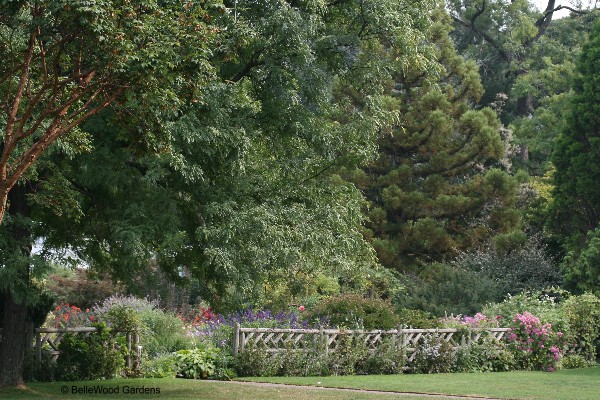
paint swatches of color onto the green landscape.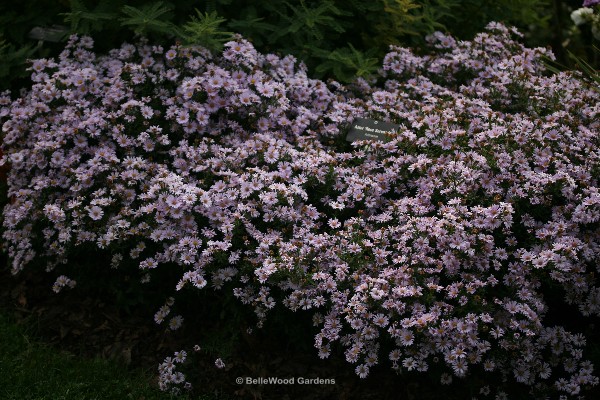
And en masse, they're magnificent.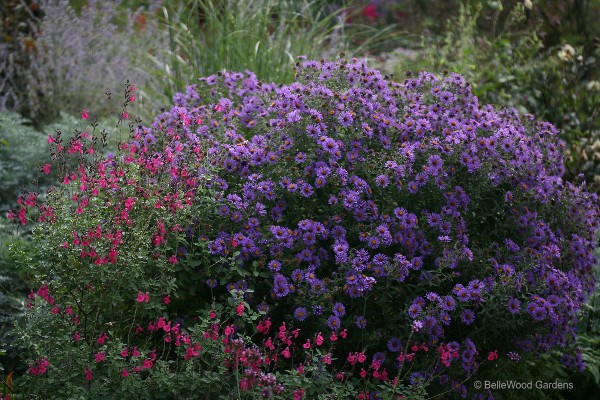
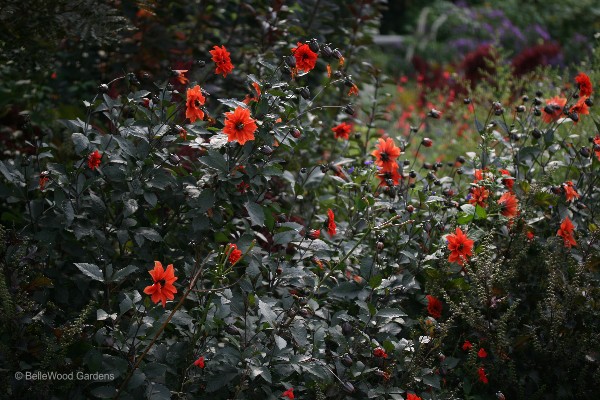
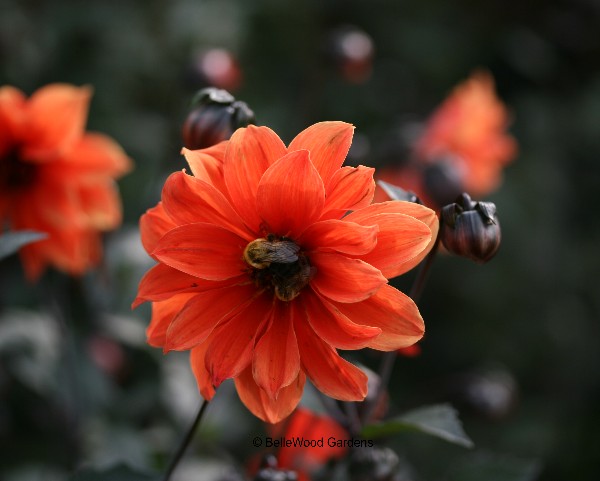
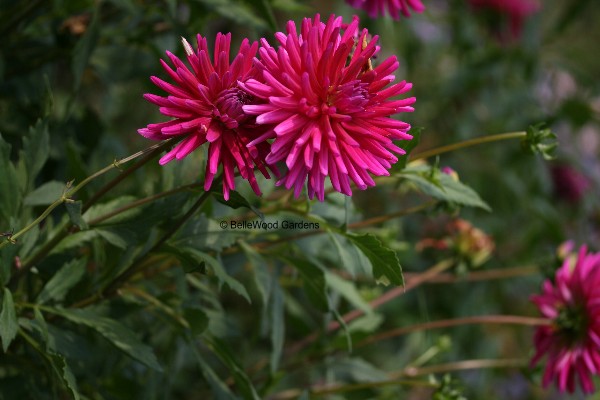
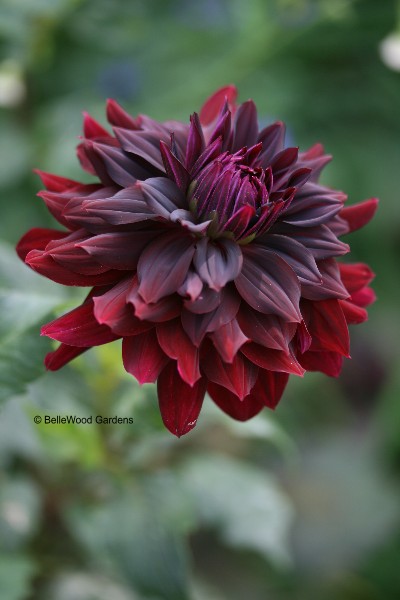
"That ravishing beauty's name" Scott Canning told me, "is 'Rip City'; not nearly as beautiful as she is."
Embers, glowing embers and hot coals. I'm in love. 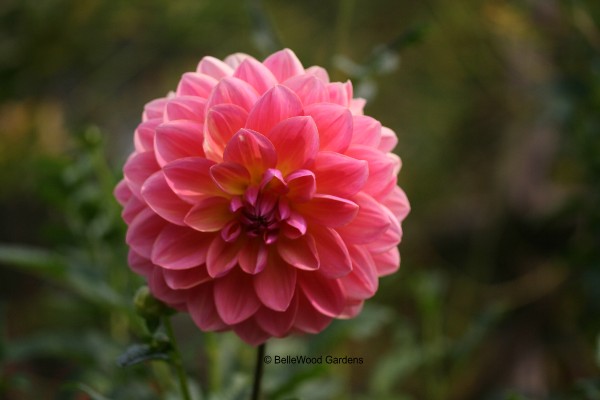

sports vivid orange flowers, attracting nectar-seeking bees as summer winds down into fall.
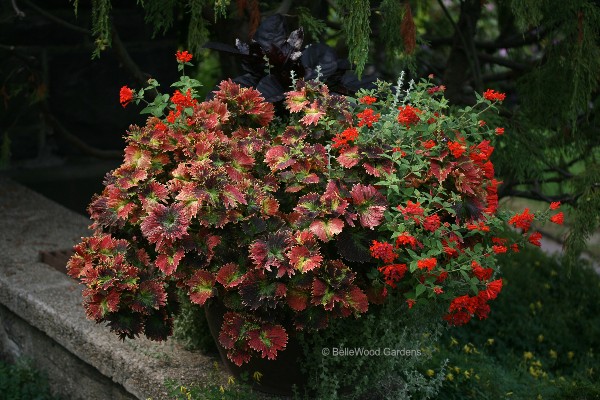
Simple, effective, and elegant.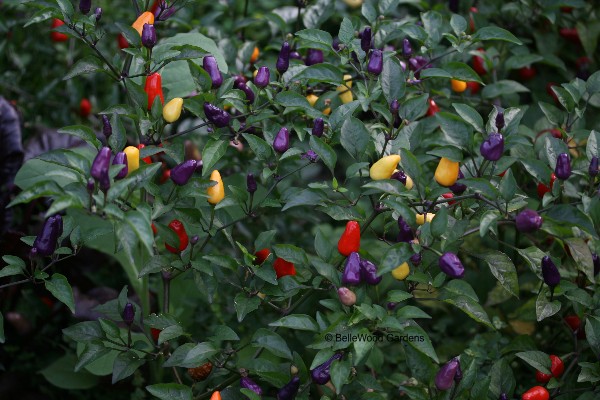
that as members of the Nightshade family they were poisonous.
Now we consume them with relish, but consign them to the vegetable garden.
This hot little pepper with a confetti of colorful fruits is being grown as an ornamental.
Would you eat them?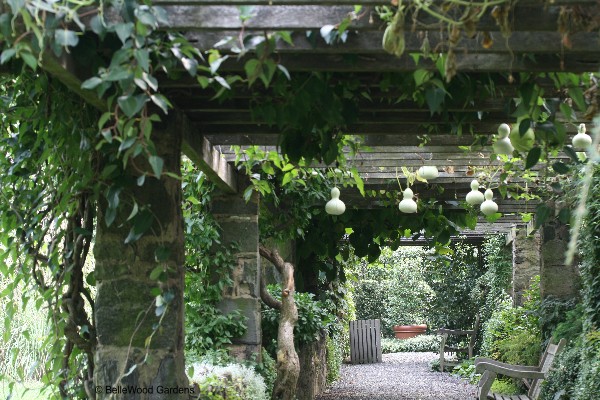
would you have thought to scramble birdhouse gourds over a pergola?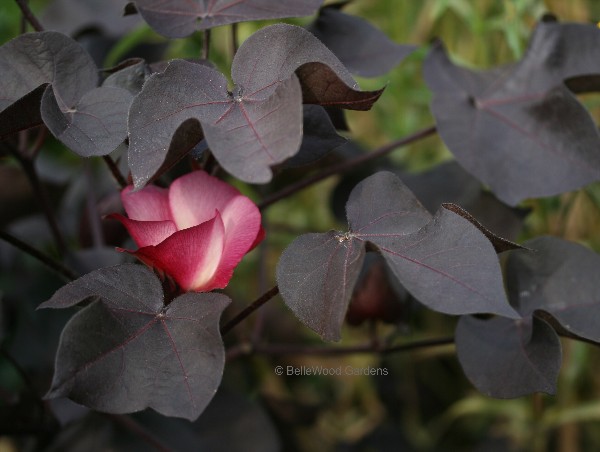
It is an ornamental cotton with the blackest foliage you've ever seen.
It starts to bloom in mid-summer, with deep rose-pink, hibiscus-like flowers.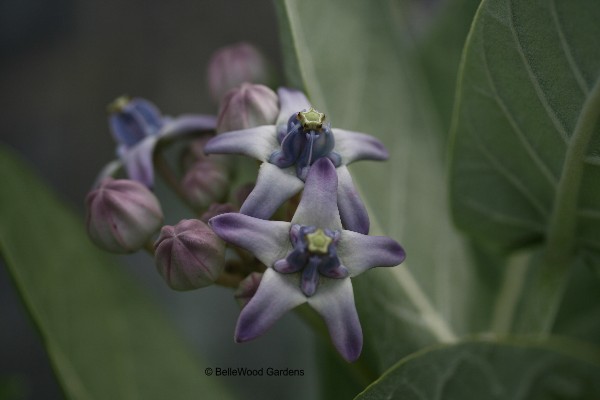
Milkweed or swallow-wort, Calotropis gigantea is a common wasteland weed.
Native to India, it has been used to treat fevers, rheumatism, indigestion, cough, cold,
eczema, asthma, elephantiasis, nausea, vomiting, and diarrhea.
Oh yes, it is also poisonous. Lovely flowers though.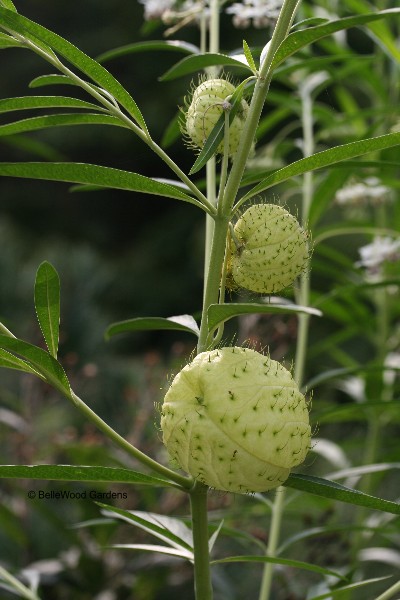
The RHS "Index of Garden Plants" refers to its seed pod as "strongly inflated."
I'll say. Made me think of a puffer fish. Typical 5-parted flowers like the butterfly weed
of meadows, though swan plant's flowers are milky white, not orange.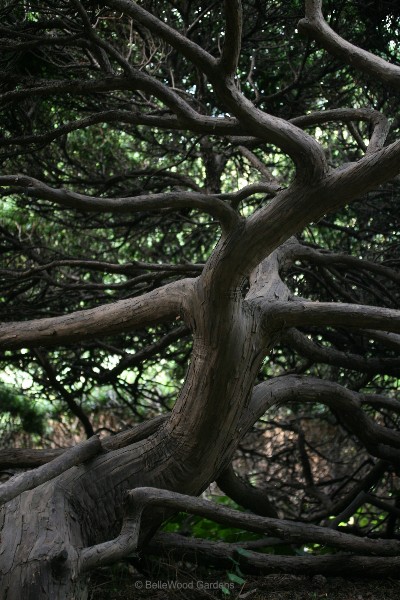
pruned by deer. Then there is this fabulous pruning that reveals the skeleton within.
Sinuous undulations of trunk and branch. Wonderful.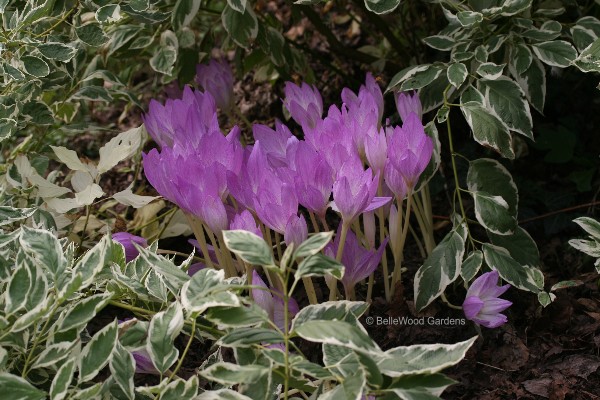
now. Cool rosy lavender chalices, like crocus on steroids, flowering into the autumn light
then fade, their leaves outwaiting winter to emerge in spring.
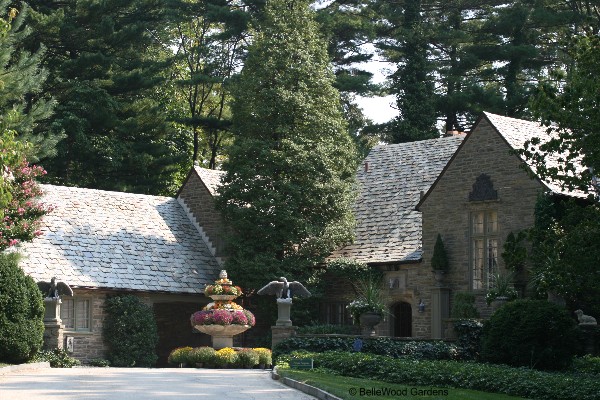
and 150 acres were given to Liddon and his wife, Alice Herkness, as a wedding gift by her parents in 1936
(the property split from the family's estate.) His father-in-law had, among other assets, the patent on carbon paper,
quite valuable in the days of typewriter technology.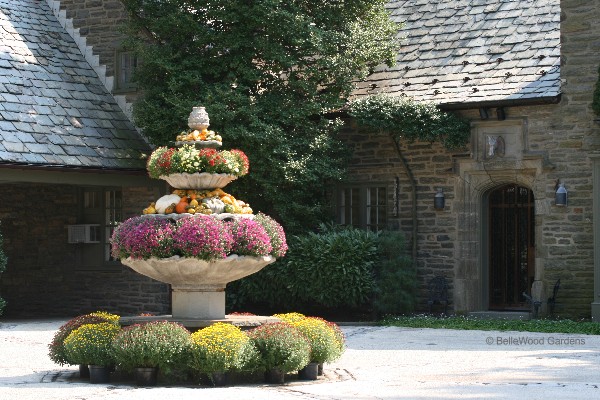
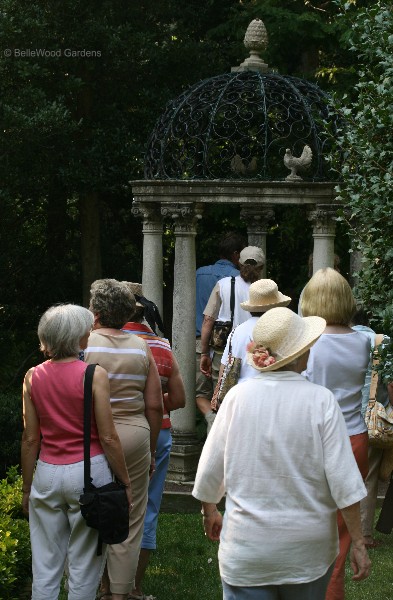
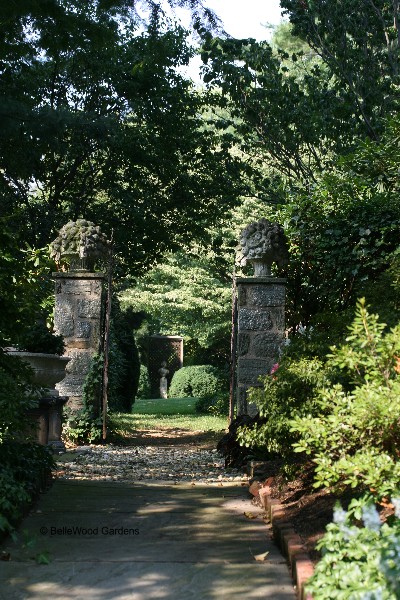
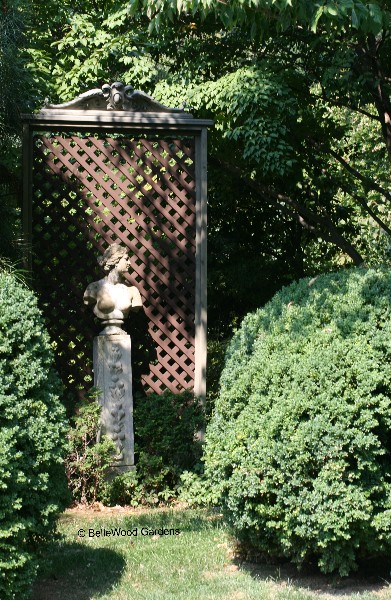
Lizards in the garden. Statues of cats. A rooster.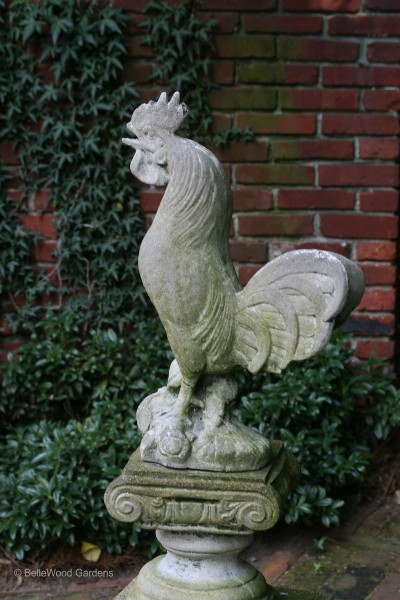
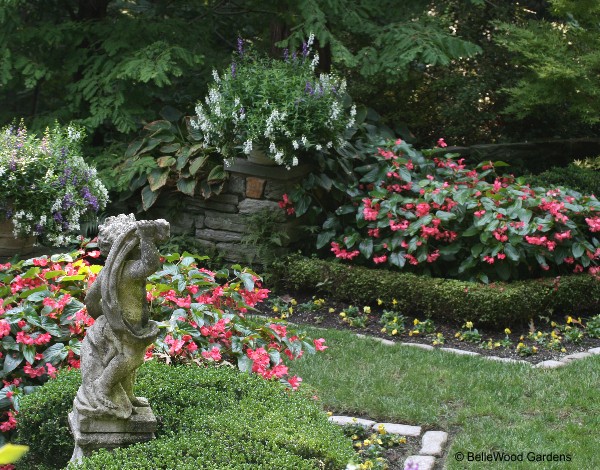
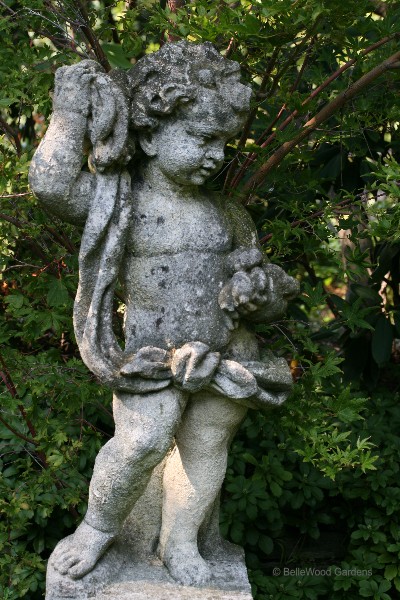
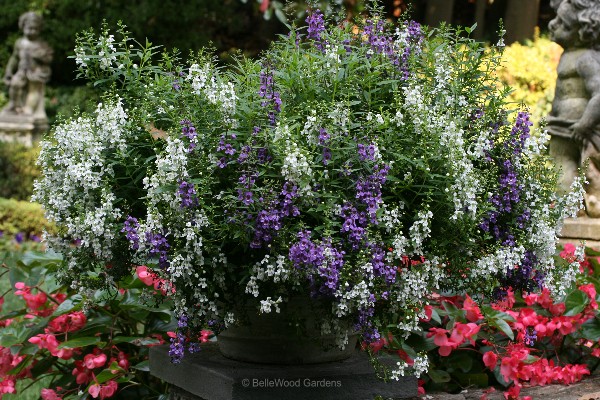
So an absolutely enticing little heated plunge pool was built nearby, as visually "right" as it is convenient.
Off to the far left is a small gazebo, and to the far right, an elegant confection of lacy ironwork.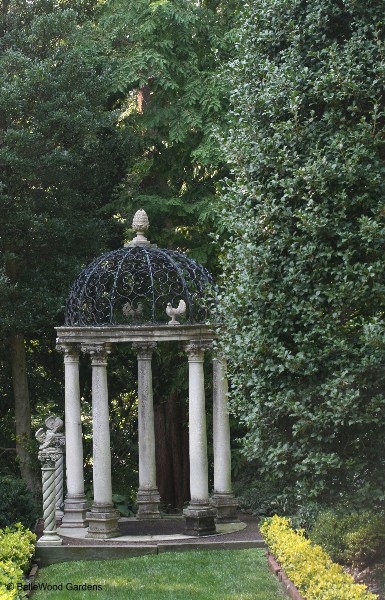
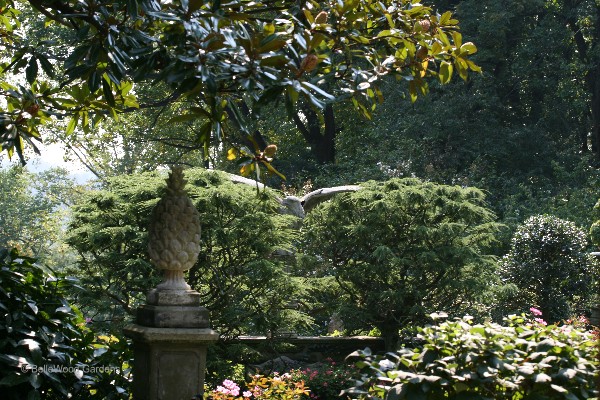
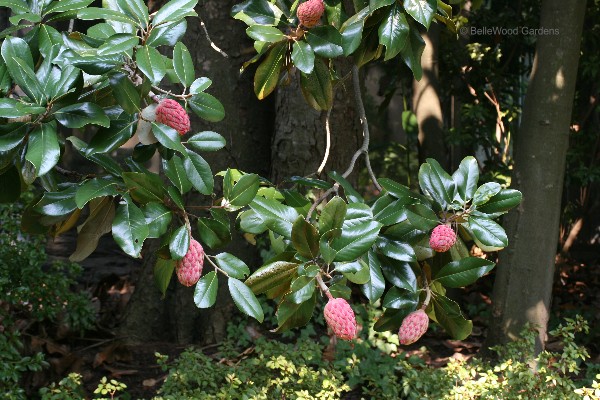
Today is the day the public is invited to come and pick, participate in the vendange, the grape harvest.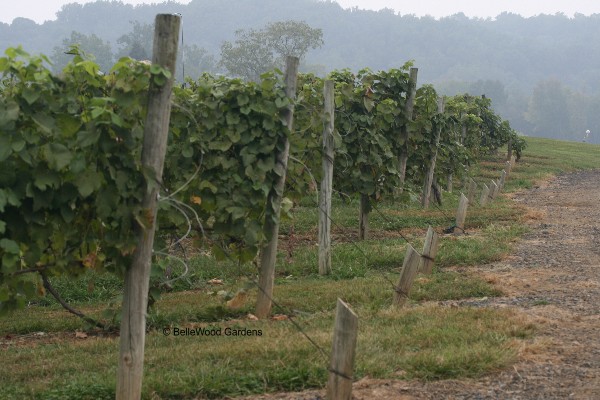
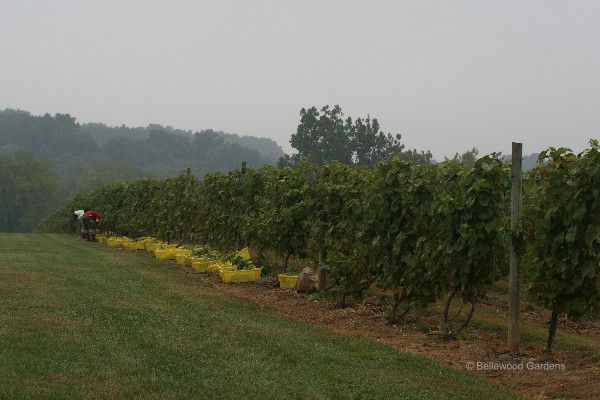
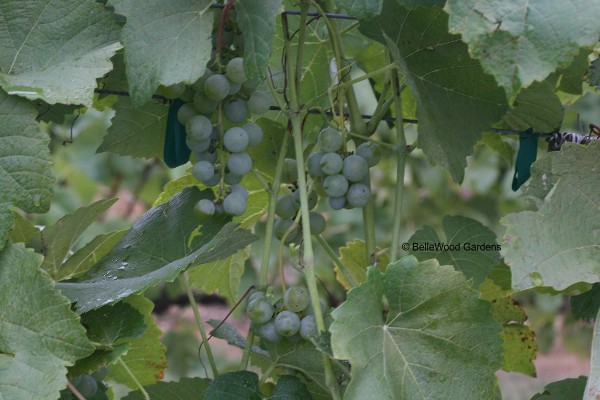
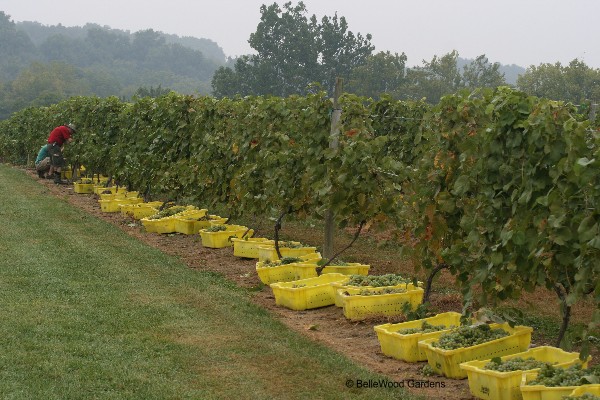
heaping the baskets with grapes that will, no doubt
become another of Alba Vineyard's delicious wines.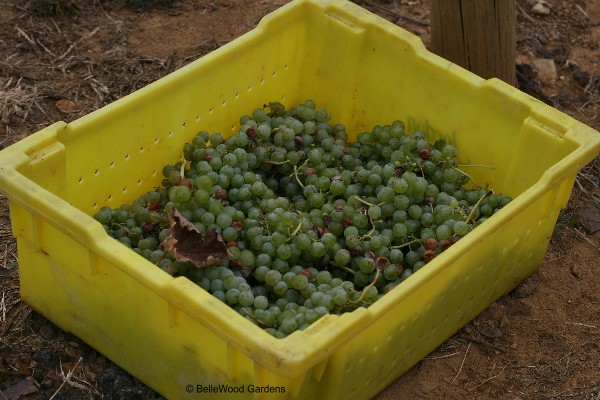
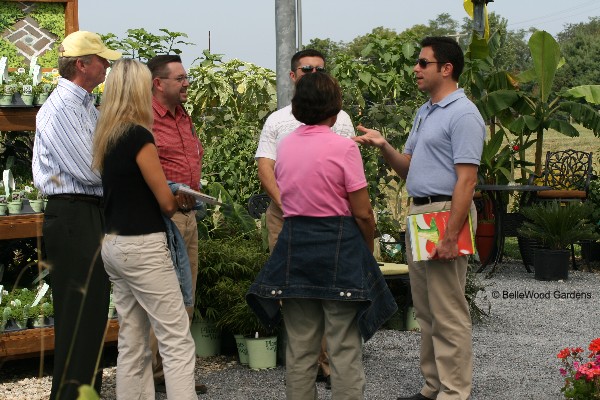
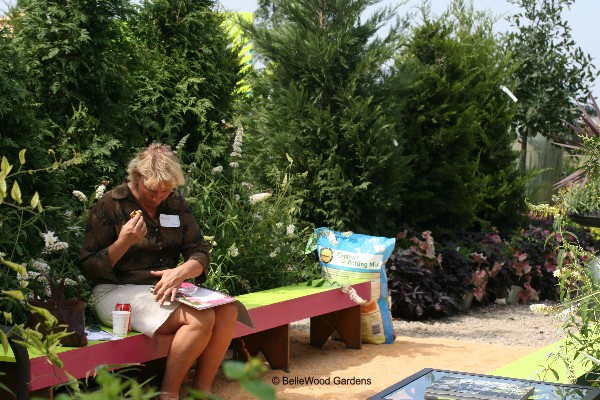
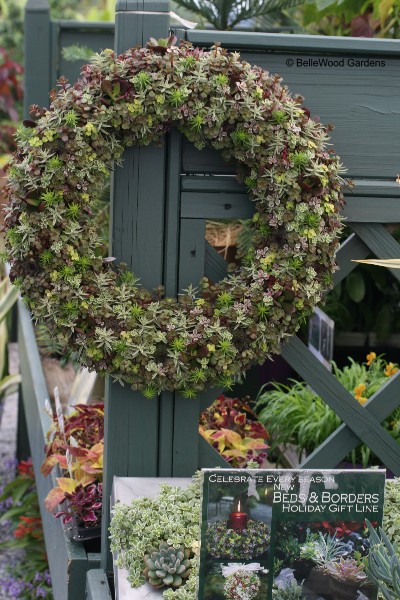
Plants are raised specifically for use in these colorful and appealing, beautifully textured succulent wreaths.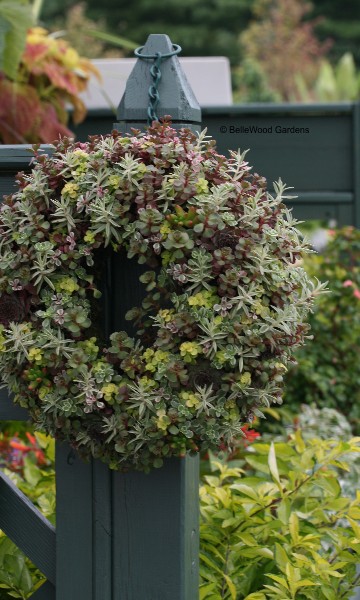
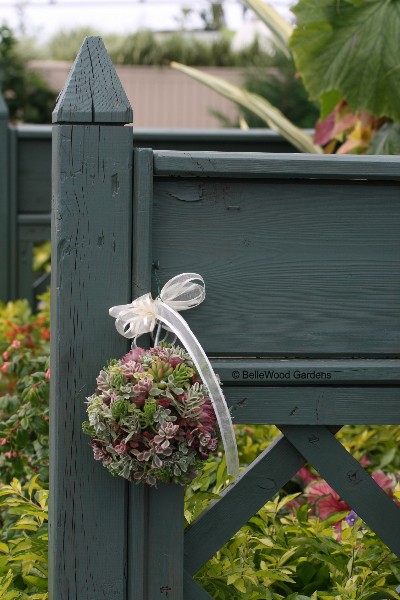
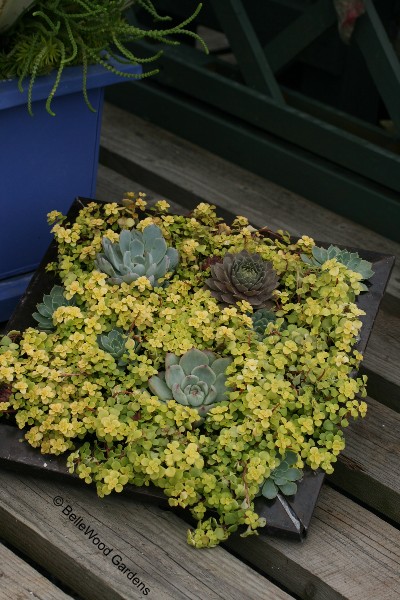
glaucous blue and bronze-brown hen and chicks set off by a golden background.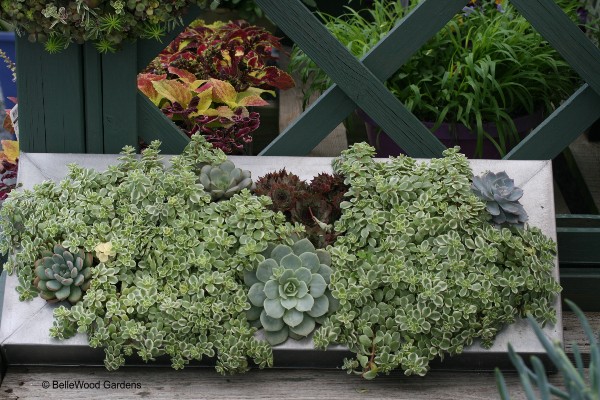
it is laid flat for watering. Lasts for about a year, I was told, before it gets leggy and frowsy-looking.
Of course that's with proper care and ample light.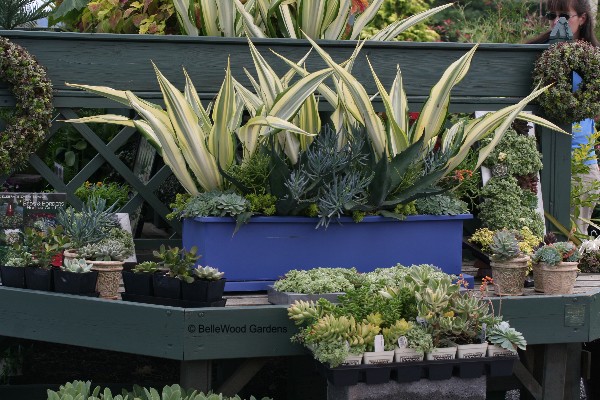
coleus with names, a diversity of begonias,
and these handsome cream-colored furcraea, a popular member of the agave family.
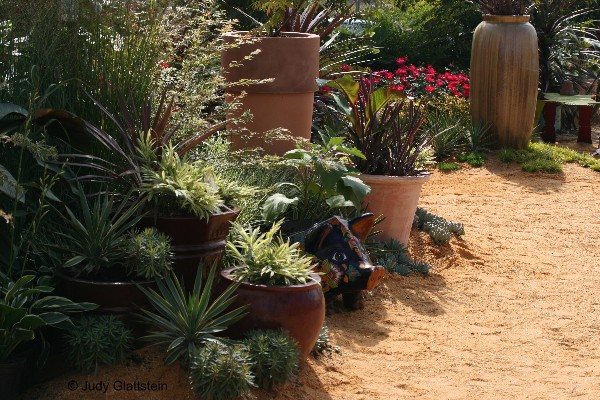
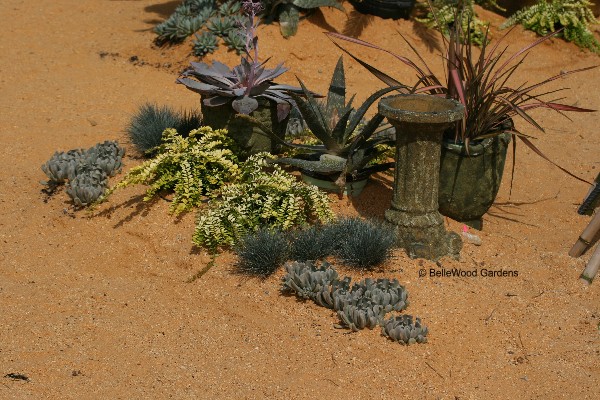
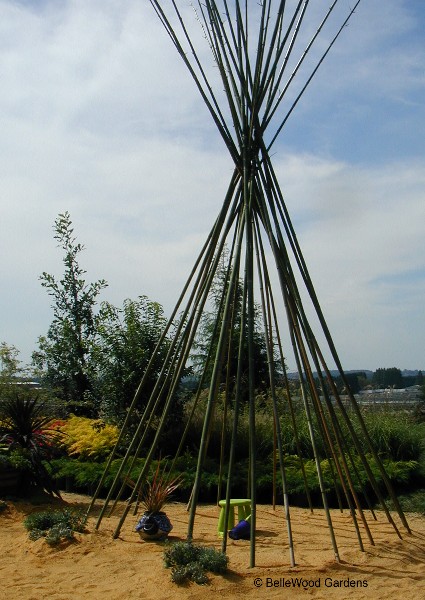
Wonderful flowers, colorful foliage, easy to grow, require minimal care and maintenance.
At least a modicum of human intervention is necessary:shade-loving plants in the woods
and sun lovers out in the open.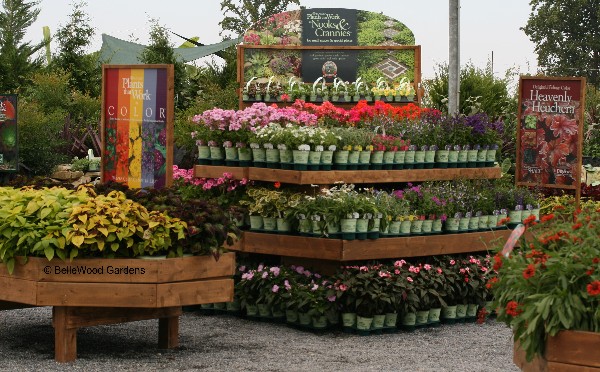
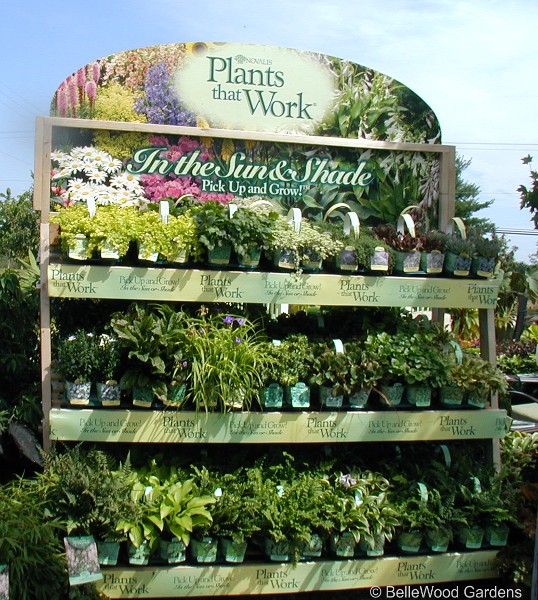
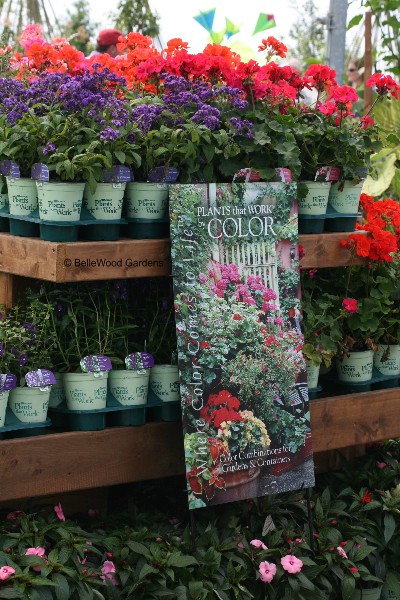
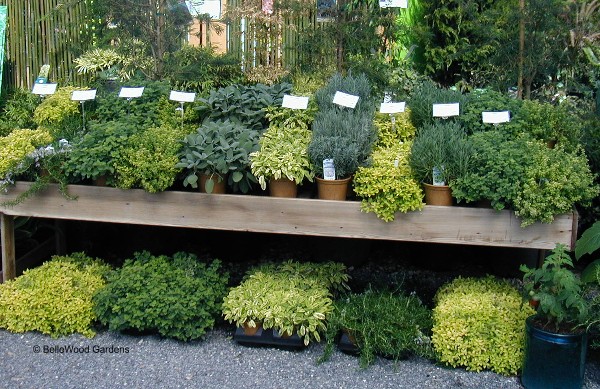
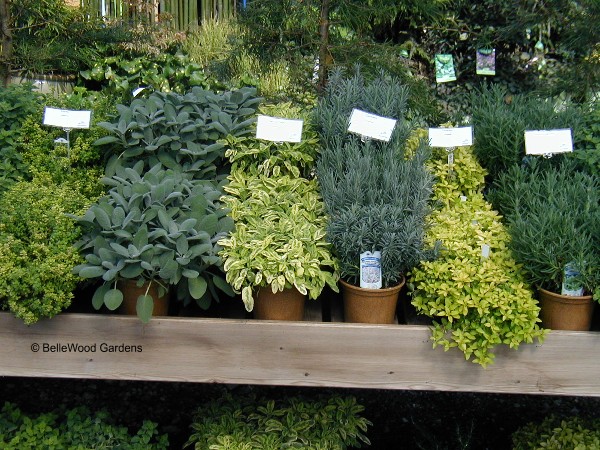
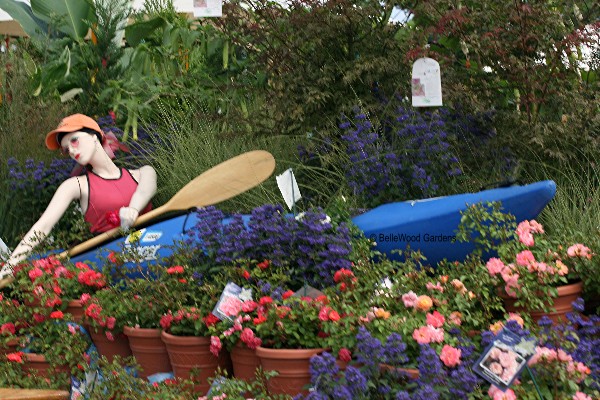
I mean digging your garden. There's plants for every taste and style.
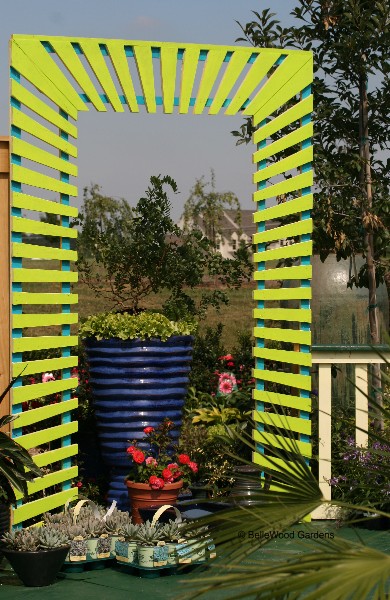
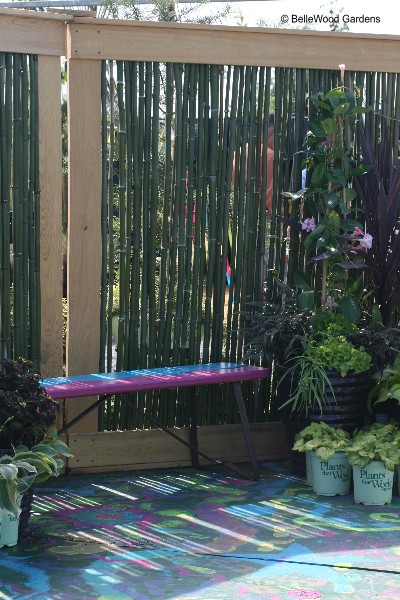
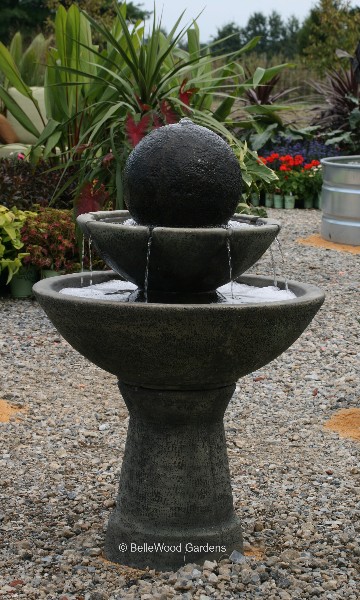
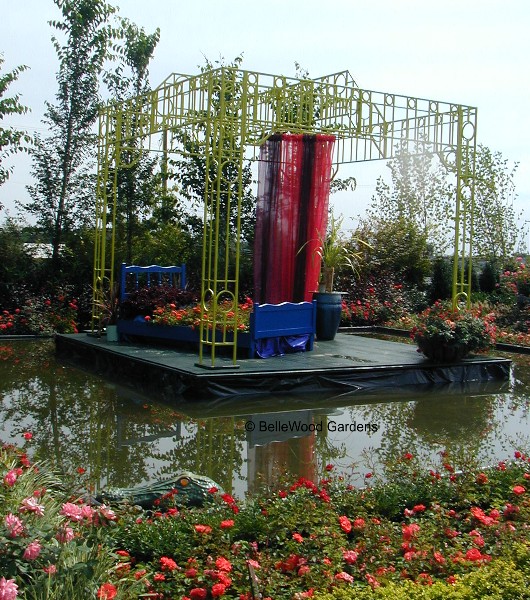
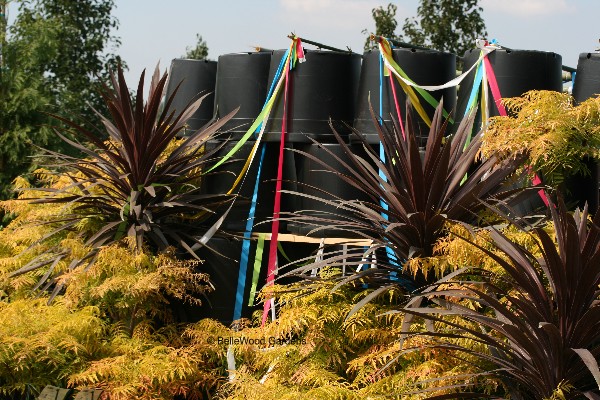
Tiger Eye sumac with cordyline, its erupting volcano
of sturdy ribbon-like burgundy foliage certain to replace ho-hum dracena.
Or perhaps the black, black, black elephant ears attracts your attention.
There are new elephant ear out there, coming our way from a breeder in Hawaii.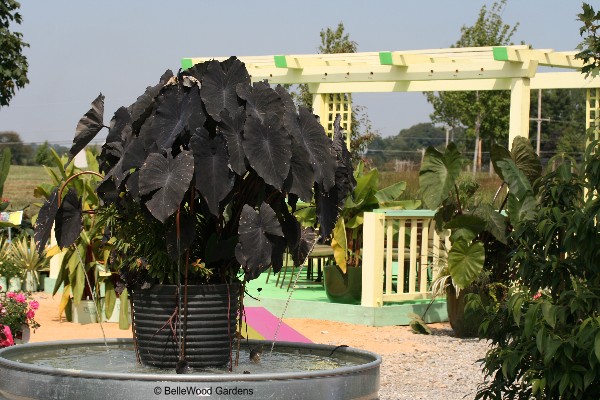
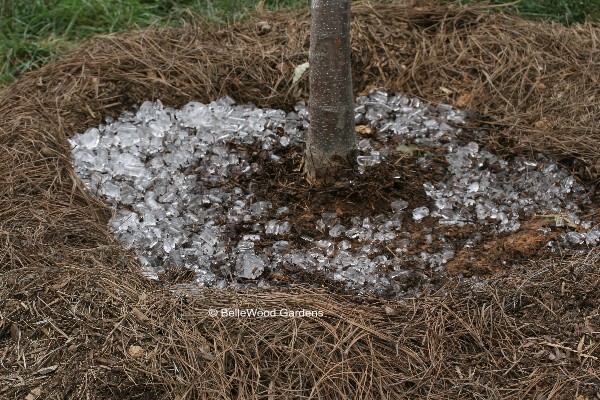
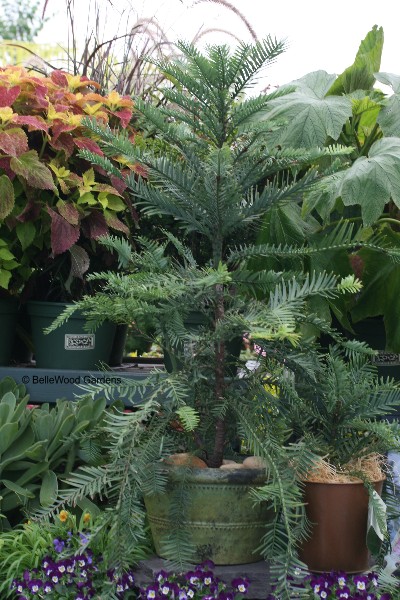
(related to the Norfolk Island pine) is another of those ancient of days species
known as fossils and found as survivors (think metasequoia and gingko.)
Discovered in Australia in 1994, plants will be offered for sale in Summer 2008.

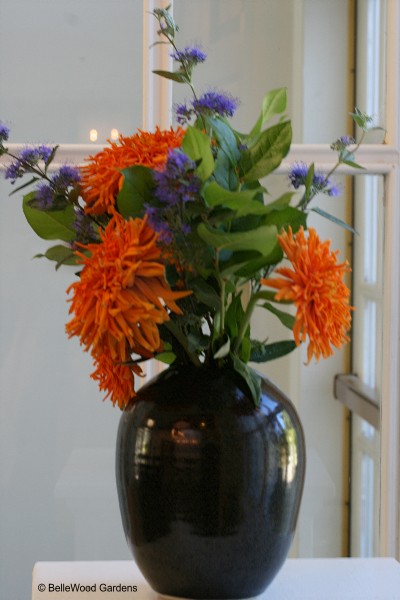
marigolds and zinnias and dahlias.
from the asters and Joe Pye weed, ironweed and sunflowers that call this region home.
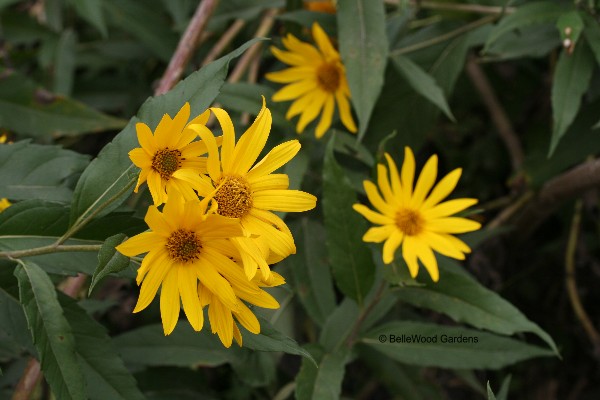
Only native plants were chosen for the landscape, which was designed by F.M. Mooberry.
The Brandywine Conservancy published a ground-breaking book on gardening with native plants in 1978.
"Landscaping with Native Plants" by Elizabeth N. du Pont encouraged gardeners and designers
to take advantage of the many benefits of using native plants.
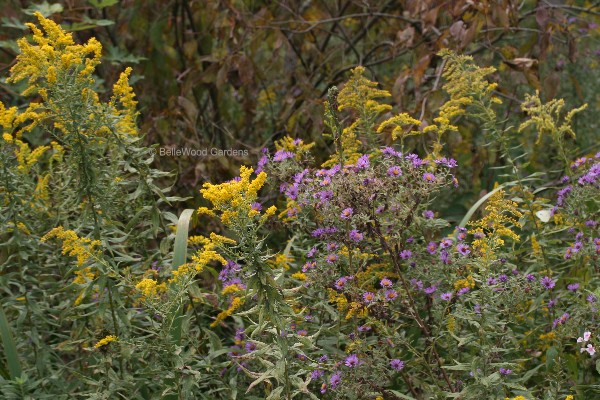


Surely it wasn't this tall when we moved it outdoors,
so sizable that it's taller than the gutters.

and the tree is much reduced in size. Still shapely and attractive though.
But now it needs to come in. Not merely in, but up. Up the stairs,
around the landing, up the other half-flight of stairs and onto the balcony.
chandelier swaying somewhat but still intact. Most of dirt still in pot.
If it grows over the winter I'll root prune it in spring,
and shoehorn it back into its current container
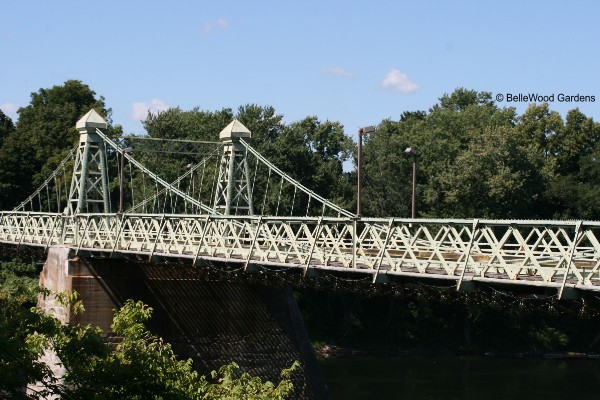
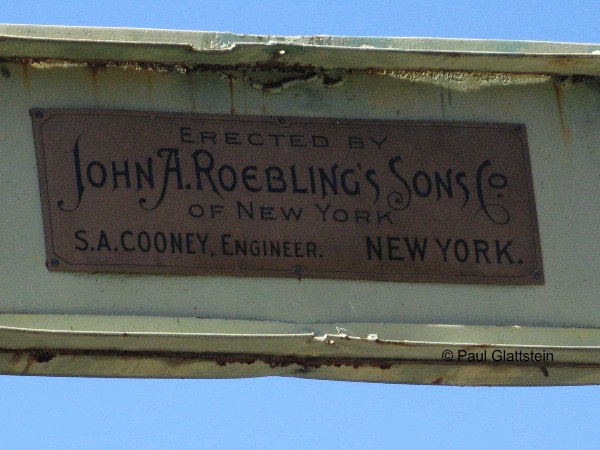
Photograph Credit Paul Glattstein 2007. All rights reserved.
(except, one assumes, as passengers in a trailer, pulled by a motor vehicle.)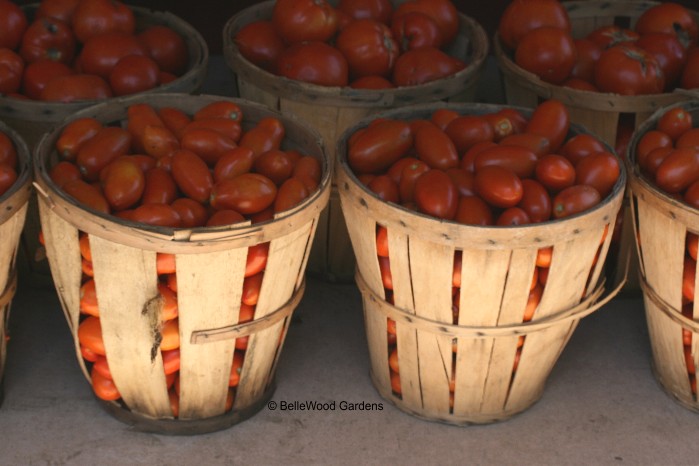
To be skinned, seeded, chopped, lightly sauteed with onions and peppers and seasonings,
then frozen, to enhance our winter meals, flavoring soups and stews with the taste of real tomatoes,
not bland tomato-shaped vegetable products foisted upon us when winter locks the land in ice.